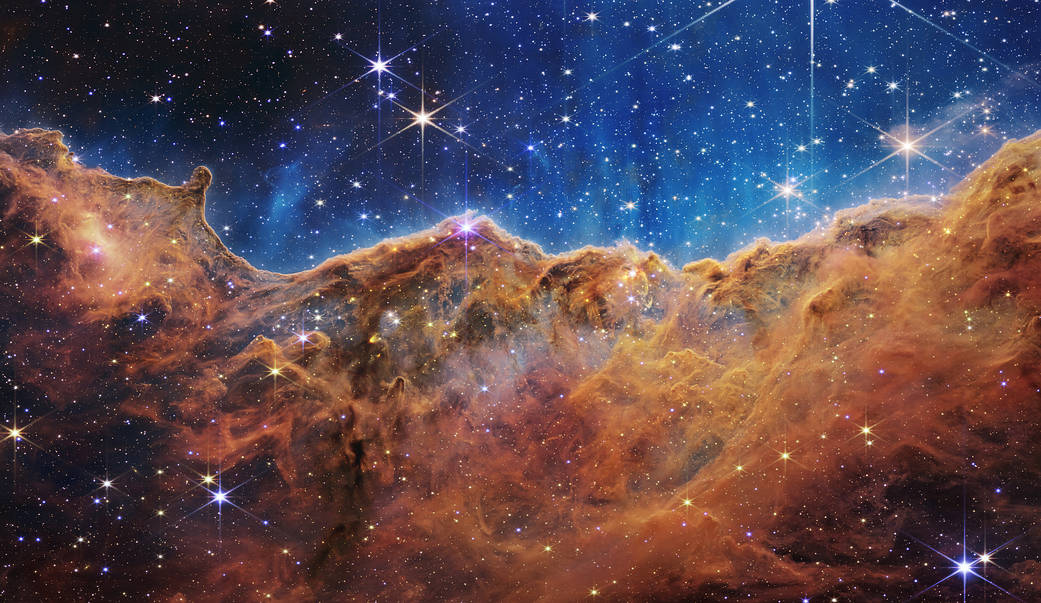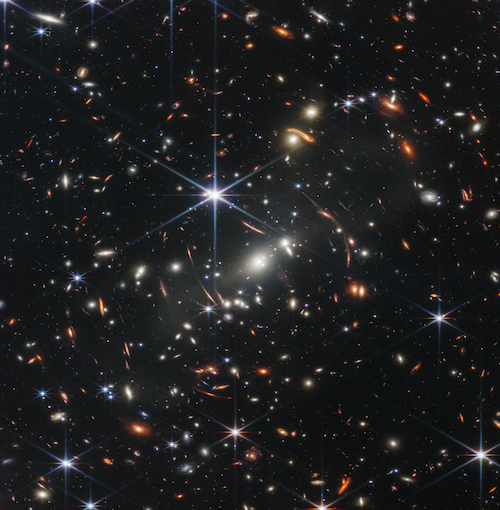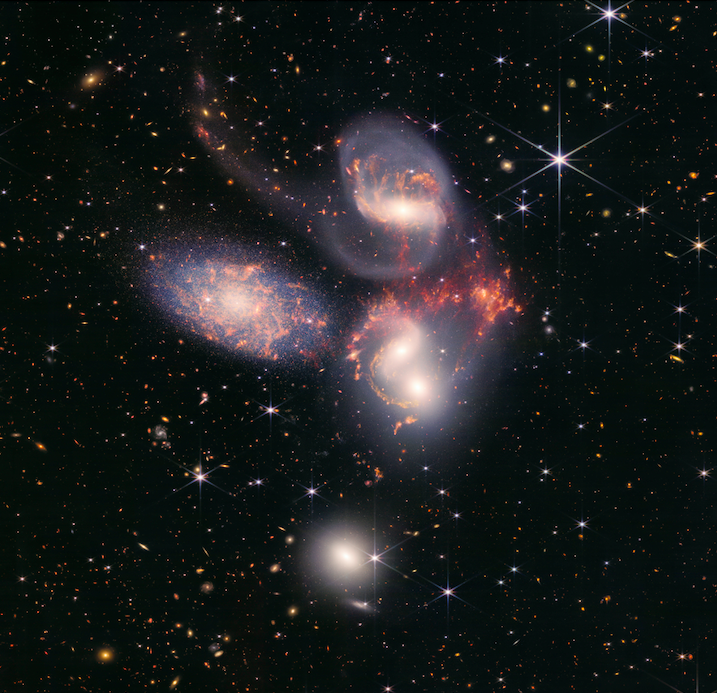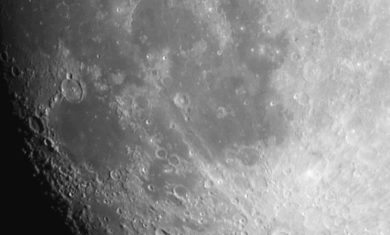JWST: The Most Powerful Infrared Space Telescope Humans Have Ever Created

Header Image: The Cosmic Cliffs in NGC 3324, also known as the Carina Nebula. This image was taken by the JWST and shows cosmic dust and gas a part of the nebula, but also previously obscured star nurseries and stars that we can now see with the space telescope’s infrared light. Image Credit: NASA, ESA, CSA, and STScl
It’s been 25 years of waiting, a picture perfect launch, and now months of patient, painstaking, exquisitely precise calibration. Finally, the JWST* has started doing what it was designed to do: collect light from distant objects to help us learn more about how our universe works.
We are so excited that this new amazing tool has begun doing real science, and we’d like to explain a bit about how the telescope works and highlight what to expect from it over the next few months and years.

Image Caption: This is a galaxy cluster known as SMACS 0723. This image was taken by the JWST and is the deepest and sharpest infrared image of the universe that humans have ever imaged. Image Credit: NASA, ESA, CSA, and STScl
About Infrared Light and Infrared Space Telescopes
The JWST primarily collects a type of light that your eyes can’t see, called infrared light. This infrared energy was first discovered by astronomer William Herschel in 1800—yes, the same William Herschel who discovered the planet Uranus in 1781. He and his sister Caroline Herschel were prolific astronomers and telescope makers!
Your skin can detect some infrared light, and it registers to your skin as heat. Your TV remote control also uses infrared light to send signals to your television. Fun fact: the Adler Planetarium has an infrared camera always operating in our Telescopes: Through the Looking Glass exhibit! Next time you visit us in Chicago, check out how similar—and different—you look when seen by our infrared camera.
The JWST is a 21-foot (6.5 meter) wide infrared telescope made of 18 individual hexagonal mirror pieces orbiting in space a million miles away from Earth. The mirror segments are positioned precisely so that together they form a curved bowl shape. This curved shape allows the JWST to collect and focus light.
The telescope also points away from the Sun, using a tennis court sized five-layer Sun shield to protect it from the Sun’s heat and keep it extremely cold. It needs to be cold so that it can detect the faint infrared light of distant objects. If it was too warm, the telescope’s own heat would swamp everything and the space telescope would just, in essence, detect itself. The telescope’s mirrors collect and focus light that is then directed onto the observatory’s four different science instruments.
What Will The JWST Take Photos Of
The data from the instruments on the JWST will help us learn about a wide variety of objects and phenomena in our universe. The science goals for the mission can be grouped into four themes:
- The Early Universe: Our universe is just under 13.8 billion years old. The JWST will peer back nearly to the beginning, to see the formation of the first stars, galaxies and maybe the formation of supermassive black holes over 13.5 billion years ago.
- Assembly and Evolution of Galaxies: The JWST’s images will help astronomers compare the faintest, earliest galaxies to today’s grand spiral and elliptical galaxies, helping us to understand how galaxies assemble and evolve over billions of years.
- The Birth of Stars and Protoplanetary Systems: The JWST will be able to see through and into clouds of dust where stars and planetary systems are forming, including clouds that are opaque to light that our eyes can see.
- Planetary Systems and the Origins of Life: The JWST will tell us more about the atmospheres of planets around other stars, and it will also study objects within our own solar system, like planets, moons, asteroids, and comets.
Thanks to the incredible precision of the rocket that launched the JWST to space, it used very little fuel to refine its path out to its final orbital location. This means that there is extra fuel available onboard for the telescope to maintain its orbital position over time. Astronomers originally anticipated up to ten years of lifetime for the telescope, but we may get as much as twenty five years of work from this landmark mission.
Right now, the JWST has begun working through its science mission, with each day devoted to collecting light from different objects, based on the proposals that were approved by the JWST science team. Teams of astronomers from across the globe will receive the science data and imagery and make conclusions about what they see.
On July 12, 2022, NASA released the first images captured by this telescope! You can check out the gallery of these images here.

Image Caption: This is a group of five galaxies known as Stephan’s Quintet. This image was taken by the JWST and is the space telescope’s largest image to date. Image Credit: NASA, ESA, CSA, and STScl
One highlight of this science proposal process was that the process itself was double-blind, meaning the teams proposing for the JWST science investigations didn’t know who would review their proposals, and the people reviewing the proposals didn’t know who the proposers were. What did we get out of this process? We got a selection of amazing science proposals, led by a diverse set of investigators, including graduate students and women. The potential for the impact of contributions to the field of astronomy from this observatory is incredible.
Good luck to the JWST team and the science teams as they embark on their science investigations!
*In our blogs and other materials, we use the acronym JWST rather than the full phrasing James Webb Space Telescope in acknowledgement of the concerns around James Webb’s actions as a NASA agency administrator in the 1960s that contributed to the “Lavender Scare” targeting LGBTQ people in government at the time. If you would like to learn more about this topic, please read this space.com article and this nature.com article.







